-
 Bitcoin
Bitcoin $106,077.7663
-2.62% -
 Ethereum
Ethereum $2,644.4634
-6.15% -
 Tether USDt
Tether USDt $1.0002
0.01% -
 XRP
XRP $2.1872
-4.65% -
 BNB
BNB $653.9698
-2.13% -
 Solana
Solana $153.1055
-6.13% -
 USDC
USDC $0.9995
-0.02% -
 Dogecoin
Dogecoin $0.1816
-7.39% -
 TRON
TRON $0.2711
-2.62% -
 Cardano
Cardano $0.6627
-6.02% -
 Hyperliquid
Hyperliquid $41.2391
-2.26% -
 Sui
Sui $3.2151
-6.48% -
 Chainlink
Chainlink $13.9480
-8.21% -
 Avalanche
Avalanche $20.3371
-6.68% -
 Bitcoin Cash
Bitcoin Cash $426.8582
0.05% -
 Stellar
Stellar $0.2690
-3.73% -
 UNUS SED LEO
UNUS SED LEO $8.8698
-1.89% -
 Toncoin
Toncoin $3.0810
-5.36% -
 Shiba Inu
Shiba Inu $0.0...01223
-7.14% -
 Hedera
Hedera $0.1640
-6.34% -
 Litecoin
Litecoin $86.5702
-6.14% -
 Polkadot
Polkadot $3.9430
-6.93% -
 Ethena USDe
Ethena USDe $1.0004
-0.03% -
 Monero
Monero $316.4579
-4.76% -
 Bitget Token
Bitget Token $4.6091
-4.34% -
 Dai
Dai $1.0001
0.02% -
 Pepe
Pepe $0.0...01157
-8.95% -
 Uniswap
Uniswap $7.6778
-4.82% -
 Pi
Pi $0.6144
-3.05% -
 Aave
Aave $290.2271
-5.59%
How do you interpret the MTM line crossing the signal line? What does it mean when it breaks below the zero axis?
MTM line crossing above signal line signals a buy, while crossing below indicates a sell; breaking below zero axis suggests negative momentum and potential downtrend.
Jun 09, 2025 at 11:49 pm
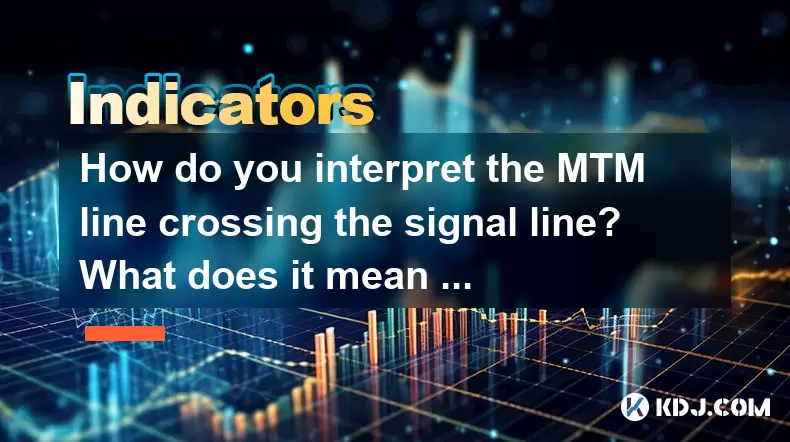
Understanding the MTM Line and Signal Line in Cryptocurrency Trading
In the realm of cryptocurrency trading, technical indicators play a crucial role in helping traders make informed decisions. One such popular indicator is the Momentum (MTM) indicator, which measures the speed or rate of price changes of a cryptocurrency. A key aspect of using the MTM indicator is understanding the significance of the MTM line crossing the signal line and what it means when the MTM line breaks below the zero axis.
The Basics of the MTM Indicator
The MTM indicator is a type of oscillator that helps traders identify the strength of a trend and potential reversals. It consists of two main components: the MTM line and the signal line. The MTM line represents the momentum of the price, while the signal line is typically a moving average of the MTM line, often set to a 9-period moving average. The interaction between these two lines can provide valuable insights into market movements.
Interpreting the MTM Line Crossing the Signal Line
When the MTM line crosses the signal line, it is considered a significant event by many traders. There are two primary scenarios to consider:
Bullish Crossover: When the MTM line crosses above the signal line, it is generally interpreted as a buy signal. This indicates that the momentum of the cryptocurrency is increasing, suggesting that the price may continue to rise. Traders often look for additional confirmation from other indicators or price action before making a trade based on this signal.
Bearish Crossover: Conversely, when the MTM line crosses below the signal line, it is typically seen as a sell signal. This suggests that the momentum is decreasing, and the price may start to decline. As with the bullish crossover, traders usually seek further confirmation to validate this signal before executing a trade.
The Significance of the MTM Line Breaking Below the Zero Axis
The zero axis, or the centerline of the MTM indicator, is another critical point of reference. When the MTM line breaks below the zero axis, it has specific implications for traders:
Negative Momentum: When the MTM line falls below the zero axis, it indicates that the cryptocurrency is experiencing negative momentum. This means that the current price is lower than it was a certain number of periods ago, suggesting that the price may continue to fall.
Potential Selling Pressure: A break below the zero axis can signal increased selling pressure. Traders may interpret this as an opportunity to sell or short the cryptocurrency, anticipating further price declines.
Confirmation of Downtrend: If the MTM line remains below the zero axis for an extended period, it can confirm the presence of a downtrend. Traders might use this information to adjust their trading strategies, such as tightening stop-losses or seeking short-selling opportunities.
Practical Application of MTM Line and Signal Line
To effectively use the MTM indicator in your trading strategy, follow these steps:
Select a Timeframe: Choose a timeframe that aligns with your trading goals. Short-term traders might use a 15-minute or hourly chart, while long-term investors might prefer daily or weekly charts.
Add the MTM Indicator: Add the MTM indicator to your chosen chart. Most trading platforms allow you to customize the settings, such as the period for the MTM line and the signal line.
Monitor Crossovers: Keep an eye on the MTM line and signal line crossovers. Use these crossovers as potential entry or exit points, but always seek additional confirmation from other indicators or price patterns.
Watch the Zero Axis: Pay close attention to the MTM line's position relative to the zero axis. A break below the zero axis can signal a shift in momentum, prompting you to adjust your trading strategy accordingly.
Combine with Other Indicators: For more robust trading signals, combine the MTM indicator with other technical indicators, such as the Relative Strength Index (RSI) or Moving Averages. This can help you make more informed trading decisions.
Examples of MTM Line and Signal Line Analysis
To illustrate how to interpret the MTM line and signal line, consider the following examples:
Example 1: Bullish Crossover: Suppose the MTM line of Bitcoin crosses above the signal line on a daily chart. This could suggest that Bitcoin's momentum is increasing, and the price might continue to rise. A trader might wait for a confirmation signal, such as a bullish candlestick pattern, before entering a long position.
Example 2: Bearish Crossover: If the MTM line of Ethereum crosses below the signal line on an hourly chart, it could indicate that Ethereum's momentum is decreasing, and the price may start to decline. A trader might look for additional bearish signals, such as a bearish divergence on the RSI, before considering a short position.
Example 3: MTM Line Below Zero Axis: If the MTM line of Litecoin breaks below the zero axis on a weekly chart and remains there for several weeks, it could confirm a downtrend. A trader might use this information to adjust their strategy, such as selling existing positions or seeking short-selling opportunities.
Frequently Asked Questions
Can the MTM indicator be used for all cryptocurrencies?: Yes, the MTM indicator can be applied to any cryptocurrency that has sufficient trading volume and price data. However, the effectiveness of the indicator may vary depending on the liquidity and volatility of the specific cryptocurrency.
How often should I check the MTM indicator?: The frequency of checking the MTM indicator depends on your trading style. Short-term traders might check it multiple times a day, while long-term investors might review it less frequently, such as daily or weekly.
Are there any limitations to using the MTM indicator?: While the MTM indicator is a useful tool, it has limitations. It can generate false signals in choppy or sideways markets, and it should not be used in isolation. Always combine it with other indicators and analysis methods for more reliable trading signals.
Can the MTM indicator be used for other financial instruments?: Yes, the MTM indicator can be applied to other financial instruments, such as stocks, forex, and commodities. The principles of interpreting the MTM line and signal line remain the same across different markets.
Disclaimer:info@kdj.com
The information provided is not trading advice. kdj.com does not assume any responsibility for any investments made based on the information provided in this article. Cryptocurrencies are highly volatile and it is highly recommended that you invest with caution after thorough research!
If you believe that the content used on this website infringes your copyright, please contact us immediately (info@kdj.com) and we will delete it promptly.
- Ditching the Meme: Why Savvy Investors Are Putting Their Money into Ruvi AI Instead of Shiba Inu
- 2025-06-13 07:00:13
- Spark Protocol Prepares to Airdrop Its SPK Token, TVL Surges 114%
- 2025-06-13 07:00:13
- Increasing by 4x in two months, Hype recovered fully from the early-year collapse and printed a new all-time high yesterday.
- 2025-06-13 06:57:02
- Coinbase to Launch Cryptocurrency Perpetual Futures Trading for U.S. Users
- 2025-06-13 06:50:13
- The Best Cryptos to Join Now: Qubetics, Stellar, and Tezos Are Leading the Charge
- 2025-06-13 06:50:13
- Trust Wallet Token (TWT) Price Drops 5.7% as RWA Integration Plans Ignite Excitement
- 2025-06-13 06:45:13
Related knowledge
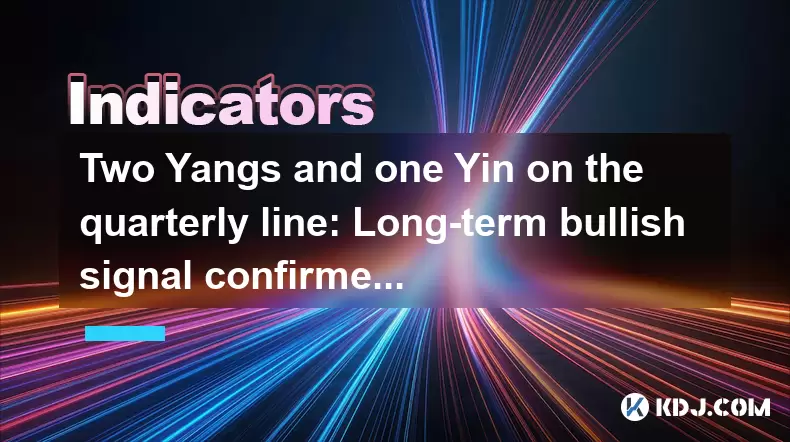
Two Yangs and one Yin on the quarterly line: Long-term bullish signal confirmed?
Jun 12,2025 at 07:00am
Understanding the 'Two Yangs and One Yin' Candlestick PatternIn technical analysis, candlestick patterns play a pivotal role in identifying potential market reversals or continuations. The 'Two Yangs and One Yin' pattern is one such formation that traders often observe on longer timeframes like the quarterly chart. This pattern consists of two bullish (...
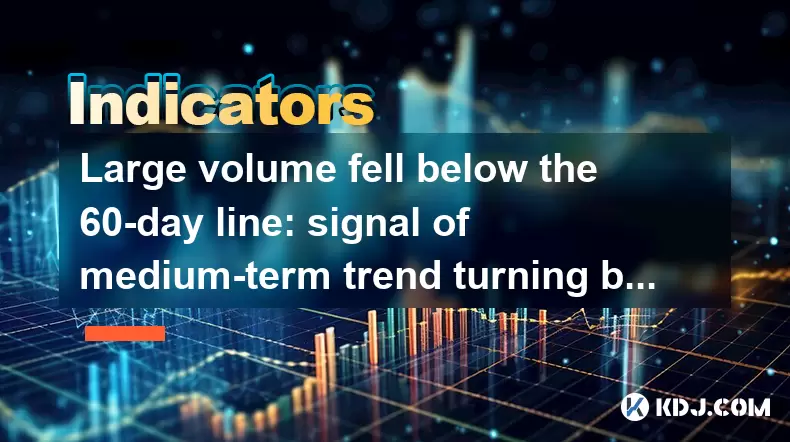
Large volume fell below the 60-day line: signal of medium-term trend turning bearish?
Jun 13,2025 at 03:42am
Understanding the 60-Day Moving Average in CryptocurrencyIn cryptocurrency trading, technical analysis plays a crucial role in predicting price movements. One of the most commonly used indicators is the 60-day moving average (MA), which smooths out price data over the last 60 days to provide traders with insights into the medium-term trend. When large v...
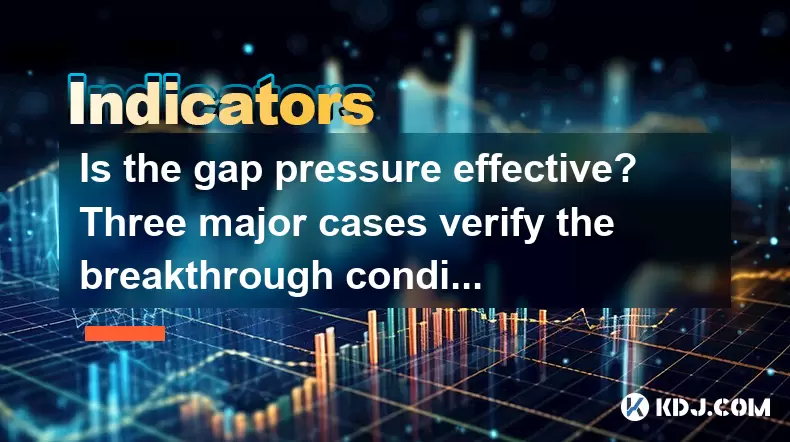
Is the gap pressure effective? Three major cases verify the breakthrough conditions
Jun 13,2025 at 04:35am
Understanding the Gap Pressure in Cryptocurrency TradingIn cryptocurrency trading, gap pressure refers to a technical analysis concept where price gaps form due to sudden market movements. These gaps often occur between the closing price of one trading session and the opening price of the next. Traders pay close attention to these gaps because they can ...
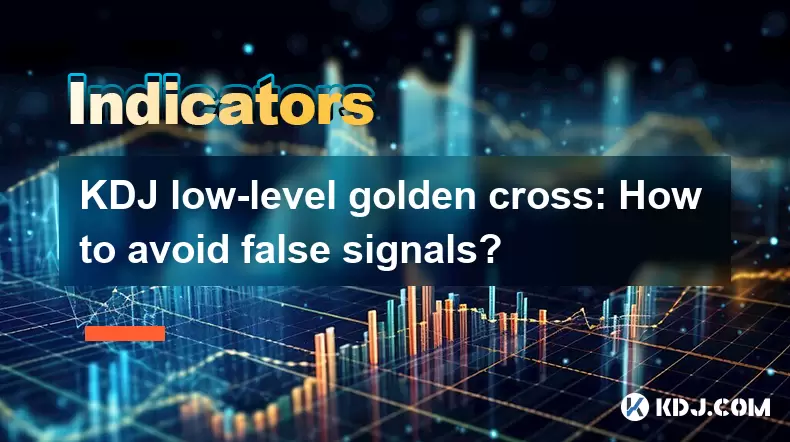
KDJ low-level golden cross: How to avoid false signals?
Jun 12,2025 at 08:21am
Understanding the KDJ IndicatorThe KDJ indicator, also known as the stochastic oscillator, is a momentum-based technical analysis tool widely used in cryptocurrency trading. It consists of three lines: the %K line (fast stochastic), the %D line (slow stochastic), and the %J line (divergence value). These lines oscillate between 0 and 100, helping trader...

Bottom-up volume stagnation: Is it accumulation or heavy selling pressure?
Jun 12,2025 at 01:42pm
What Is Bottom-Up Volume Stagnation?Bottom-up volume stagnation refers to a specific pattern observed in cryptocurrency trading charts where the price of an asset moves sideways or slightly downward, and trading volume remains consistently low over an extended period. This phenomenon is often seen after a sharp price drop or during a prolonged bear mark...
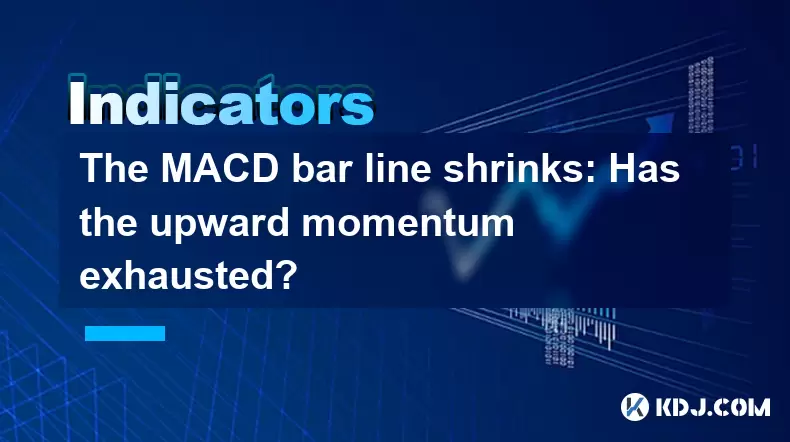
The MACD bar line shrinks: Has the upward momentum exhausted?
Jun 12,2025 at 12:49am
Understanding the MACD Bar LineThe Moving Average Convergence Divergence (MACD) is a widely used technical indicator in cryptocurrency trading. It consists of three main components: the MACD line, the signal line, and the MACD histogram (also known as the bar line). The MACD bar line represents the difference between the MACD line and the signal line. W...

Two Yangs and one Yin on the quarterly line: Long-term bullish signal confirmed?
Jun 12,2025 at 07:00am
Understanding the 'Two Yangs and One Yin' Candlestick PatternIn technical analysis, candlestick patterns play a pivotal role in identifying potential market reversals or continuations. The 'Two Yangs and One Yin' pattern is one such formation that traders often observe on longer timeframes like the quarterly chart. This pattern consists of two bullish (...

Large volume fell below the 60-day line: signal of medium-term trend turning bearish?
Jun 13,2025 at 03:42am
Understanding the 60-Day Moving Average in CryptocurrencyIn cryptocurrency trading, technical analysis plays a crucial role in predicting price movements. One of the most commonly used indicators is the 60-day moving average (MA), which smooths out price data over the last 60 days to provide traders with insights into the medium-term trend. When large v...

Is the gap pressure effective? Three major cases verify the breakthrough conditions
Jun 13,2025 at 04:35am
Understanding the Gap Pressure in Cryptocurrency TradingIn cryptocurrency trading, gap pressure refers to a technical analysis concept where price gaps form due to sudden market movements. These gaps often occur between the closing price of one trading session and the opening price of the next. Traders pay close attention to these gaps because they can ...

KDJ low-level golden cross: How to avoid false signals?
Jun 12,2025 at 08:21am
Understanding the KDJ IndicatorThe KDJ indicator, also known as the stochastic oscillator, is a momentum-based technical analysis tool widely used in cryptocurrency trading. It consists of three lines: the %K line (fast stochastic), the %D line (slow stochastic), and the %J line (divergence value). These lines oscillate between 0 and 100, helping trader...

Bottom-up volume stagnation: Is it accumulation or heavy selling pressure?
Jun 12,2025 at 01:42pm
What Is Bottom-Up Volume Stagnation?Bottom-up volume stagnation refers to a specific pattern observed in cryptocurrency trading charts where the price of an asset moves sideways or slightly downward, and trading volume remains consistently low over an extended period. This phenomenon is often seen after a sharp price drop or during a prolonged bear mark...

The MACD bar line shrinks: Has the upward momentum exhausted?
Jun 12,2025 at 12:49am
Understanding the MACD Bar LineThe Moving Average Convergence Divergence (MACD) is a widely used technical indicator in cryptocurrency trading. It consists of three main components: the MACD line, the signal line, and the MACD histogram (also known as the bar line). The MACD bar line represents the difference between the MACD line and the signal line. W...
See all articles

























































































